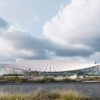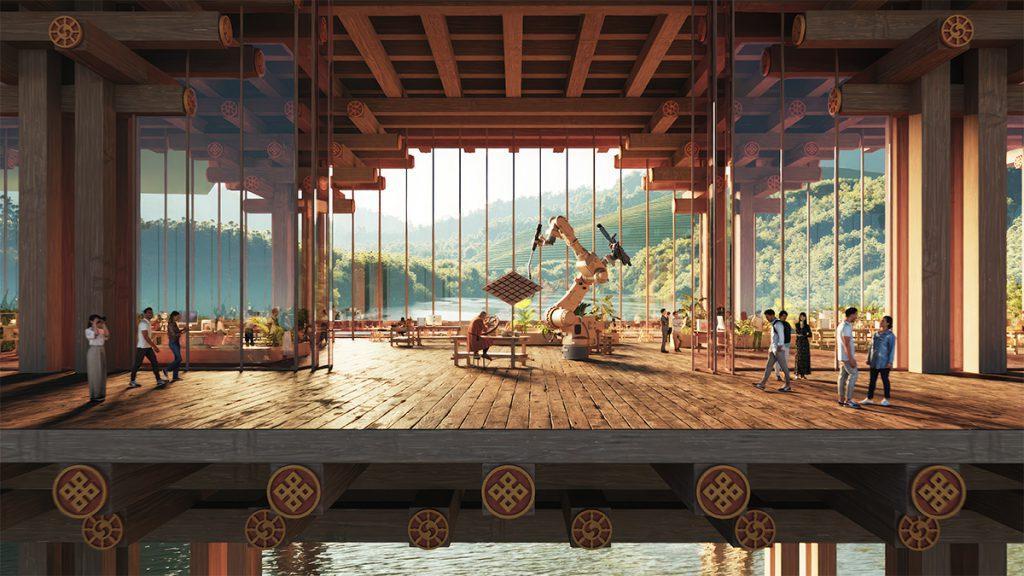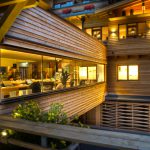The small kingdom has big plans: with the visionary “Mindfulness City”, an exemplary sustainable economic centre is to be created that fully complies with the philosophy of “Gross National Happiness”. It is being built according to a masterplan by Danish star architect Bjarke Ingels.
An audience of over 30,000 listened as the King of Bhutan presented his vision of the “Mindfulness City” on 17 December, the country’s bank holidays. And what His Majesty Jigme Khesar Namgyel Wangchuck announced there fits perfectly into the already fascinating picture of the small kingdom located between India and Tibet. Although the project aims to turn Bhutan into an economic centre of Southeast Asia, the plan for the „mindfulness city“ also gives absolute priority to everything that has made the small country world-famous: Buddhist values, the legendary Bhutanese philosophy of „Gross National Happiness“ and sustainability.
Everything for people & nature
The master plan for the project, which covers over 1,000 square kilometres, was drawn up by top Danish architects Bjarke Ingels Group (BIG) in cooperation with Arup and Cistri. It is being built in Gelephu, in the south of Bhutan. And the kingdom, which is the only country in the world that absorbs more CO2 from the atmosphere than it emits, will probably set another example of environmental and human friendliness with this major project: By investing in green energy, physical and digital networking and education, a city of the future is to be created in the future special administrative region.
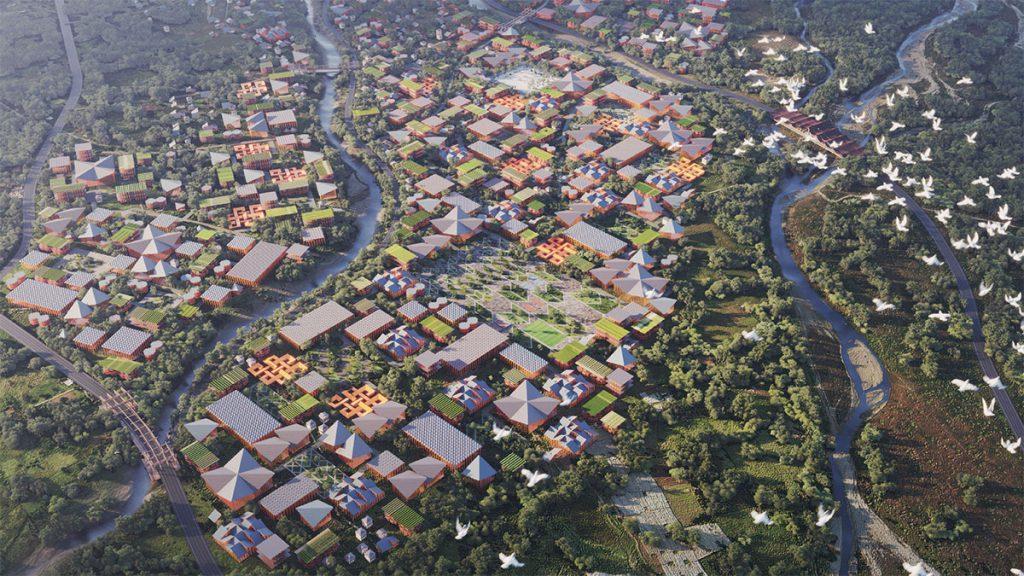
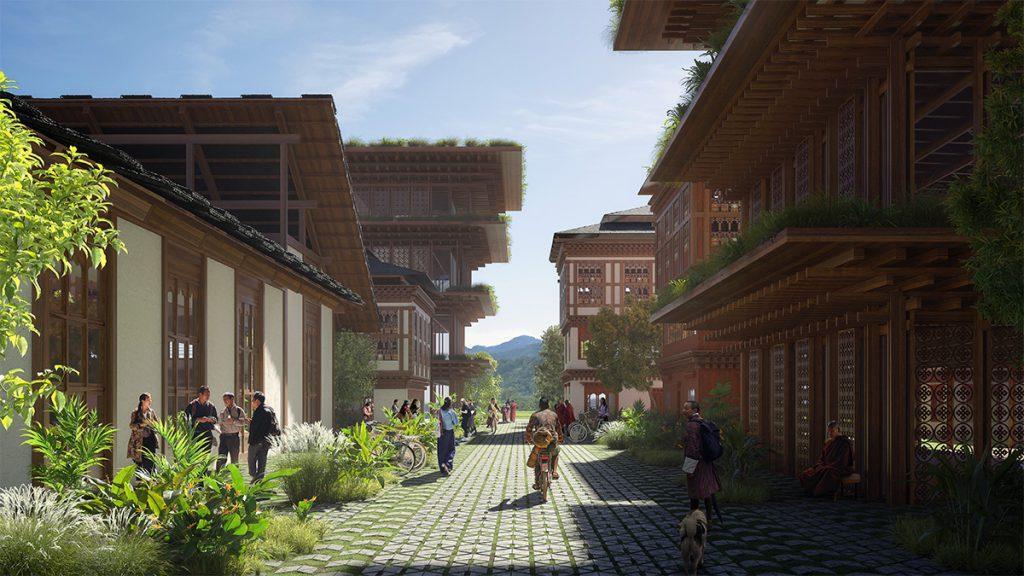
The concept, designed by BIG’s landscape and urban planning team, includes a new international airport, railway links, a hydroelectric dam, public spaces and specific building typologies. The latter are based on the nine areas of the Gross National Happiness Index: mental wellbeing, health, education, standard of living, time use, ecological diversity and resilience, good governance, cultural diversity and resilience, and community vitality.
We envision the Mindful City as a place that could not be anywhere else. A place where nature is promoted, agriculture is integrated and tradition is not only preserved but also further developed.
Bjarke Ingels, architect and Founder of Bjarke Ingels Group (BIG)
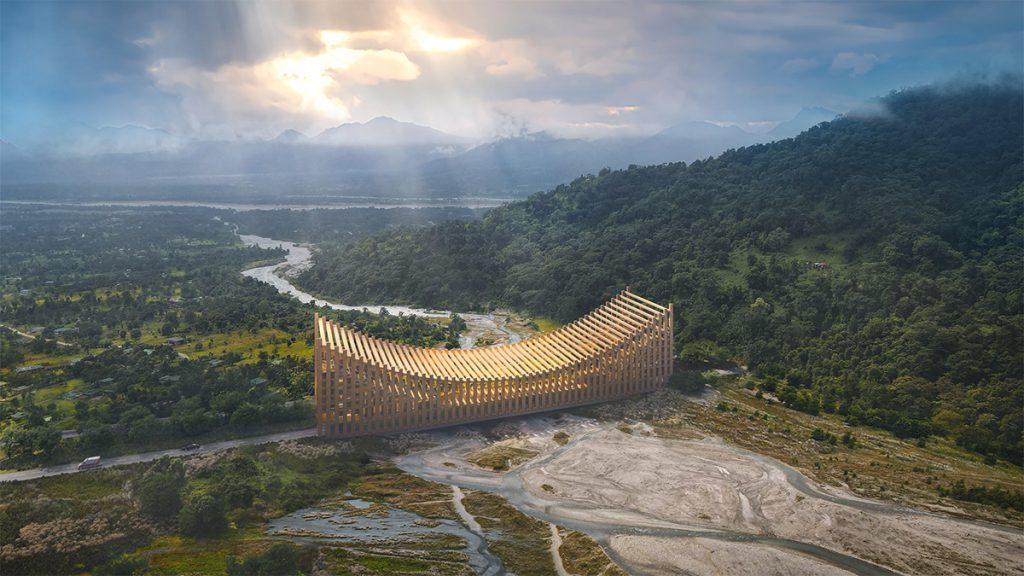
70 per cent of the country is forested. Nestled between mountains, forests and rivers, Bhutan is also one of the last biodiversity hotspots in the world. The new Mindful City is intended to reinforce this advantage. And it will do so by developing into a living network of interconnected ecosystems and neighbourhoods, shaped by the network of 35 rivers and streams that run through the area.
Gently from rural to urban
The resulting ribbon-shaped neighbourhoods resemble rice fields. They form terraces sloping down from the hills into the valley. The city increases in density: from rural, relaxing uplands to dense, urban lowlands.
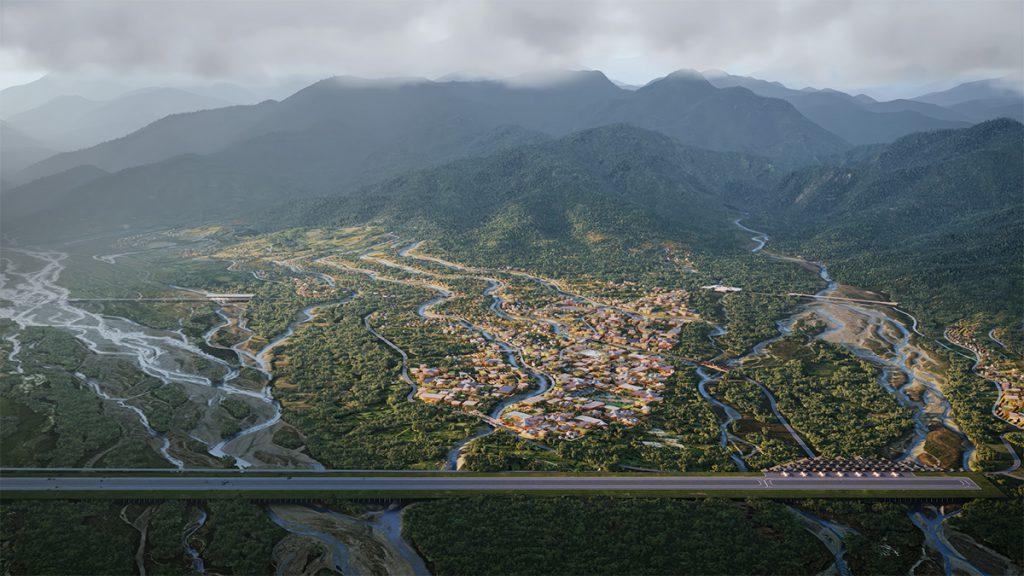
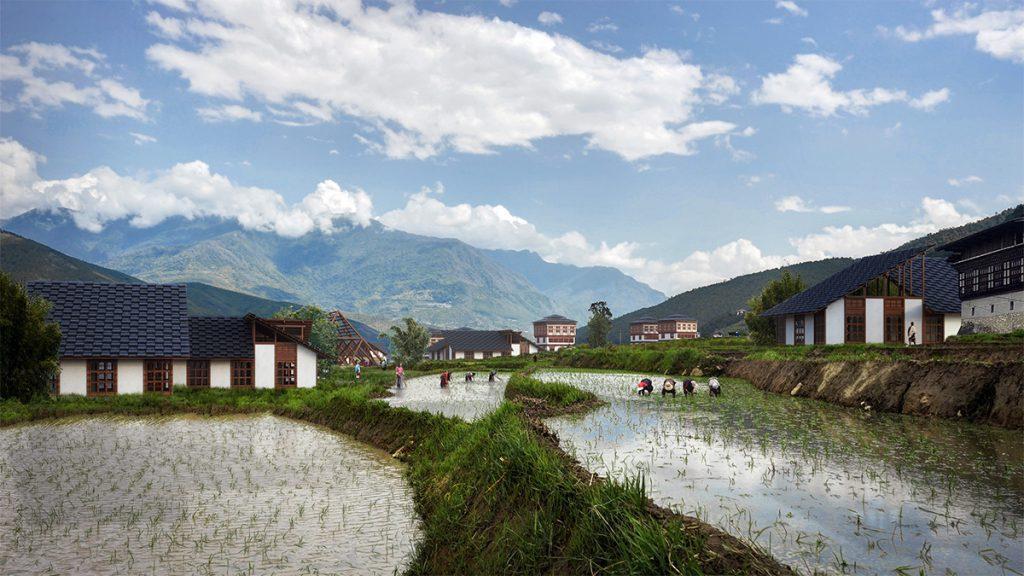
“We envision the Mindful City as a place that couldn’t be anywhere else. A place where nature is promoted, agriculture is integrated and tradition is not only preserved but also further developed,” explains Bjarke Ingels. According to the architect, Gelephu, which is characterised by waterways, will become a land of bridges, connecting nature and people, past and future, locally and globally.
Multifunctional bridges
Like Bhutan’s traditional Dzongs these new, habitable bridges are becoming cultural landmarks that also serve as transport infrastructure and urban facilities.
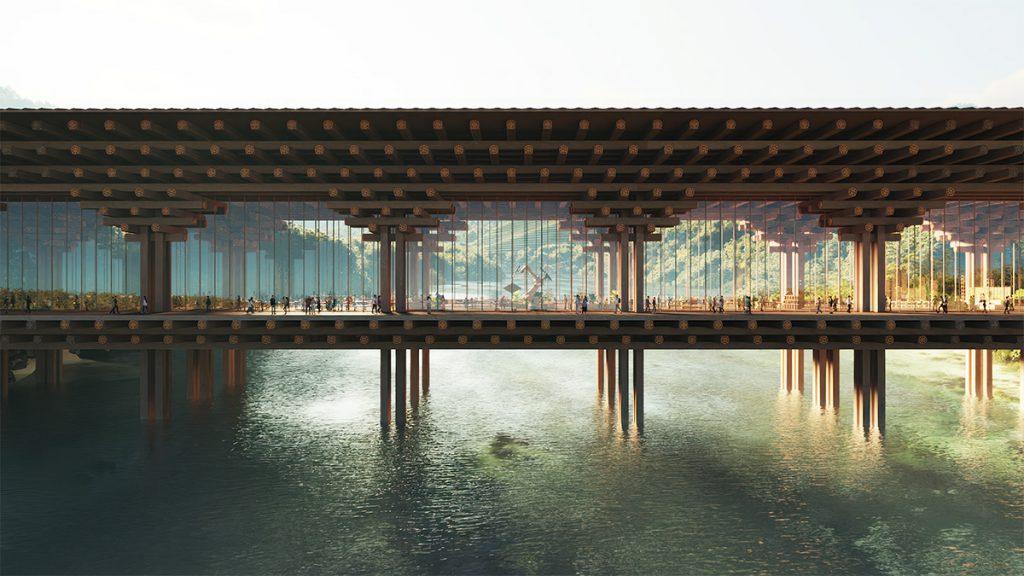
“The Sankosh Temple Dam embeds the core values of the Mindful City in a cascading landscape of steps and platforms. Technology becomes art and the forces of nature become power,” describes Ingels. And because the Danish star architect is world-famous for spectacularly innovative projects such as „Copen Hill“, „CapitaSpring“ or the „Sluishuis“ we can assume that his vision will also become reality in Bhutan.
Technology becomes art and the power of nature becomes energy.
Bjarke Ingels, architect and founder of Bjarke Ingels Group (BIG)
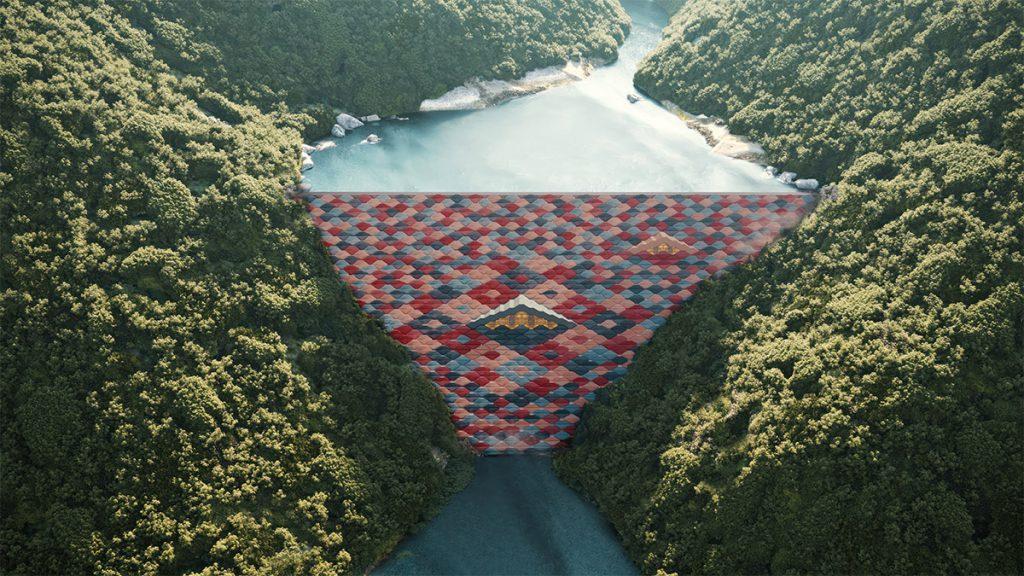
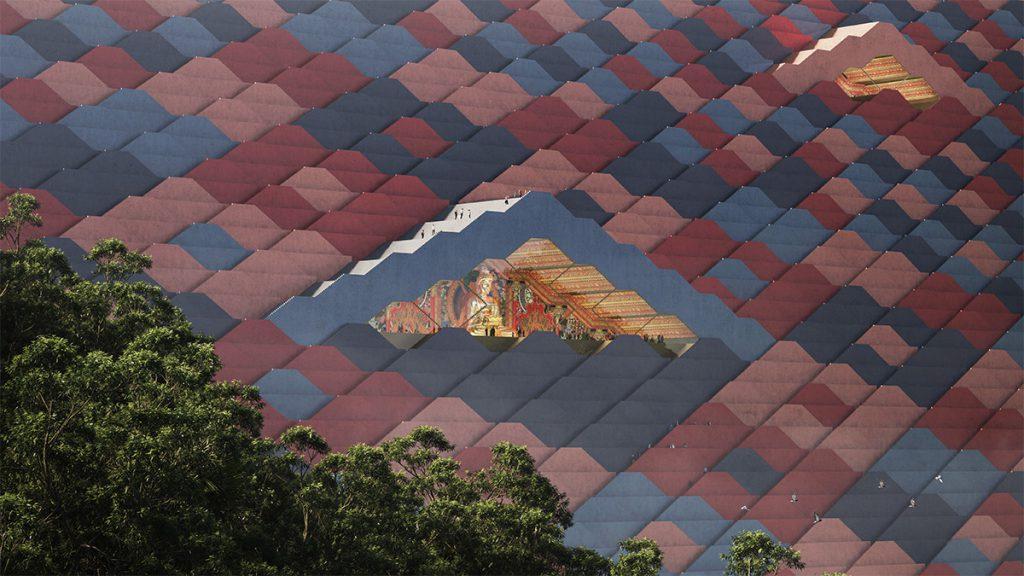
The masterplan goes into detail: Natural elements and existing infrastructure, agriculture and utilities create eleven different neighbourhoods.
Mandalas as planning patterns
Each of these neighbourhoods is designed according to the principles of the Mandalas. Defined by typologies arranged symmetrically around a central public space. These are repeated, creating a smooth transition: from small buildings scattered in the landscape in the north to larger layouts within the urban environment in the south.
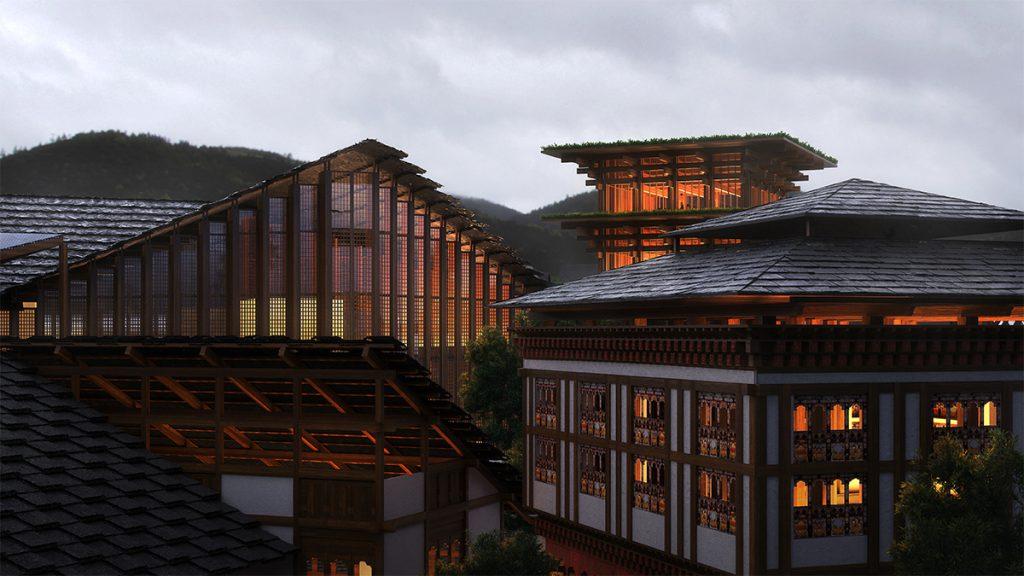
Intimate streets paved with permeable stones ensure environmentally friendly resilience by allowing rainwater to seep away instead of being channelled into the sewage system. It goes without saying that local materials such as wood, stone and bamboo are used for the new buildings. Just like the fact that typical local motifs such as cornices, ornaments and roof landscapes characterise the appearance of all the buildings.
The Mindfulness City of Bhutan will become a testimony to humanity’s inseparable connection with nature. And a global example of building a sustainable human presence on earth.
Giulia Frittoli, BIG Partnerin
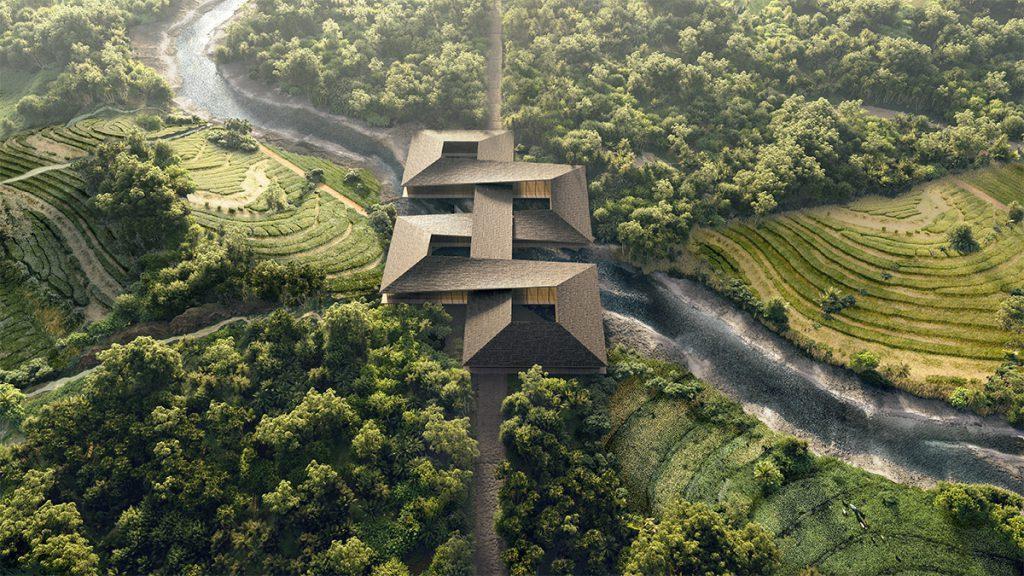
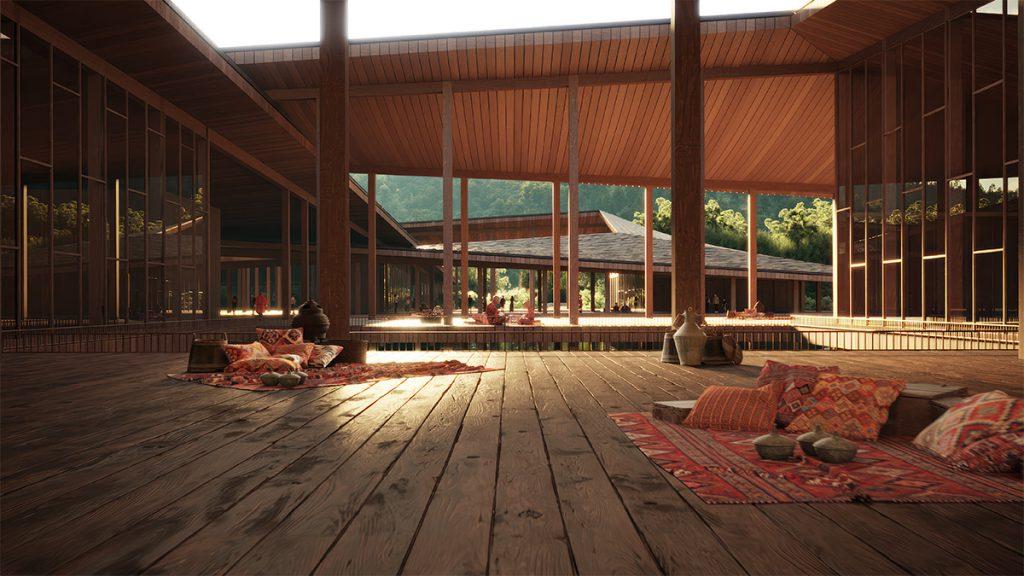
To protect existing and future buildings from flooding in the monsoon season, rice fields are being created along the rivers and tributaries running from north to south of the site. These also serve as corridors for the biodiversity of the local flora and fauna. And they leave the migration routes of elephants and other wild animals undisturbed.
Bhutan plans for national happiness
The city districts, which are separated from each other by rivers, are linked by three important mobility connections. Occasionally, these are combined as transport infrastructure with civic and cultural facilities. This gives the Mindful City of Bhutan the “habitable bridges” described by architect Bjarke Ingels. And of course, these are also tailored to each of the nine Gross National Happiness Areas.
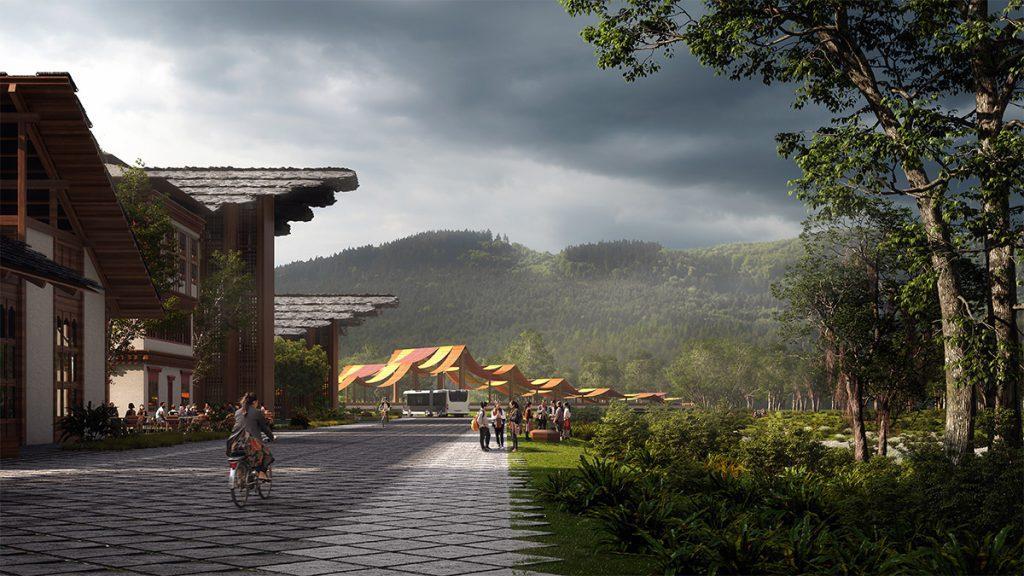
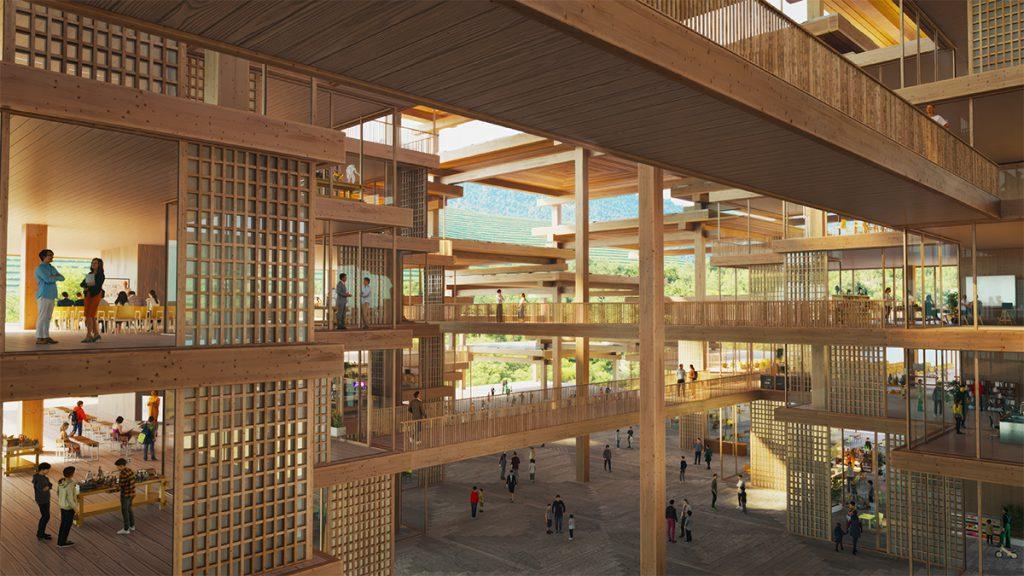
Each of these bridges is home to important destinations in the city. These include the new airport and a Vajrayana spiritual centre, which provides an insight into the daily practices of monks and mindfulness masters. A health centre that combines Eastern and Western medicine and a university that presents its academic activities are also located on the new bridges.
Hotspots that connect
A hydro and aquaponic greenhouse, where ancient agricultural practices and modern agricultural science are presented, is also part of the grand plan. As is a cultural centre where visitors can explore Bhutanese culture and customs. And a market with Bhutanese textiles, which BIG is also placing on one of the new bridges.
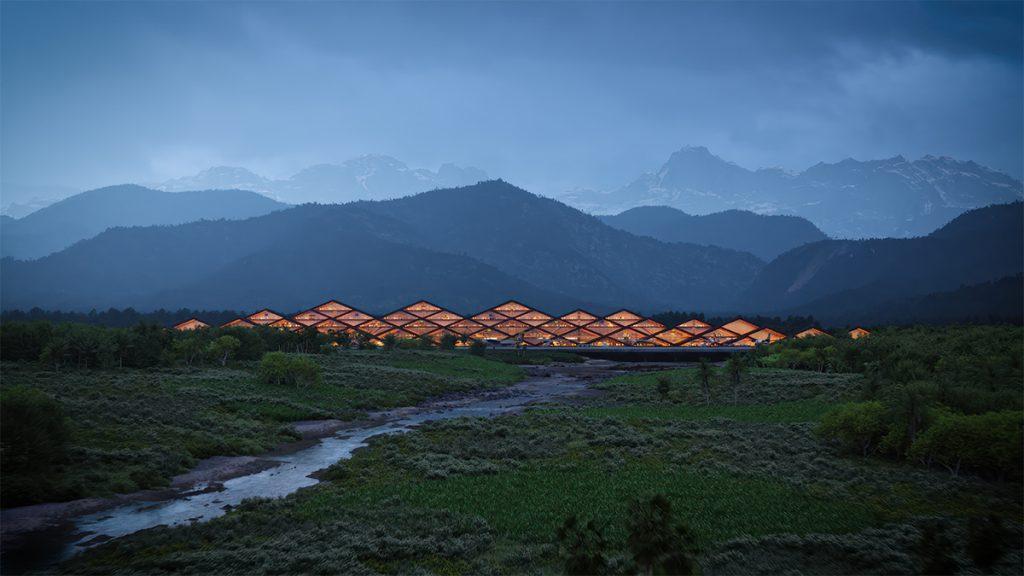
One particularly exciting bridge is the aforementioned hydroelectric “Sankosh Temple Dam”. The masterplan places this on the western border of the city. With its stepped retaining wall, which offers viewpoints, steps for meditative walks and a temple, it is one of the most impressive structures in the design: Visitors and pilgrims will be able to ascend and descend along the artificial rock on countless individual paths to the visitor centre and temple.
Tradition with a green vision
The “Sankosh Temple Dam” embodies – in architectural form – all the fundamental elements of Gelephu: the harmonious coexistence of culture and nature. Conceived from the rich heritage of the Kingdom of Bhutan and its desire for a prosperous future.
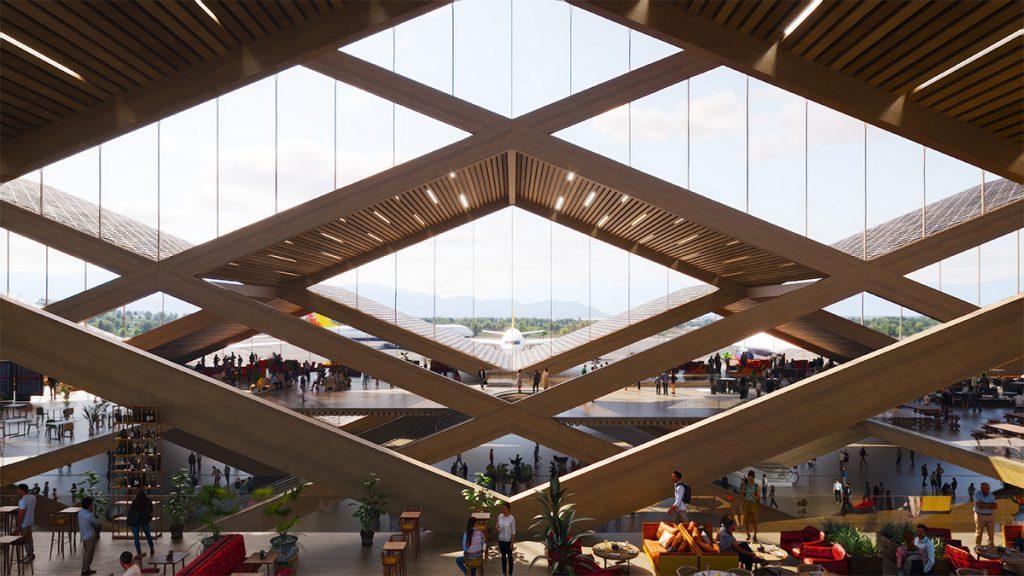
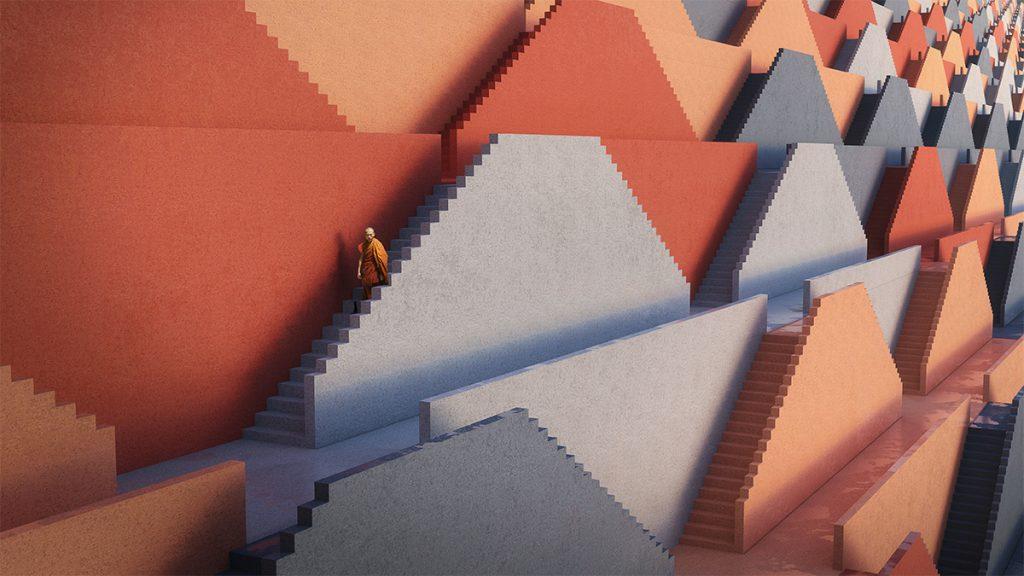
BIG partner Giulia Frittoli describes the aim of the large-scale project as follows: “Inspired by the Bhutanese culture of respect and compassion for others and nature, the Mindful City aims to improve ecological systems through urban development that connects flora and fauna as well as people and ideas. It will become a testament to humanity’s inseparable connection with nature. And a global example of building a sustainable human presence on earth.“
Bhutan “builds” confidence
The first milestone in this fascinating project was reached in December 2023. This took the form of the ground-breaking ceremony for Bhutan’s new international airport. The dry harbour is already under construction. This will create two major hubs that will expand the capacity of Gelephu’s existing tourism infrastructure.
Small countries like Bhutan can quickly and innovatively implement plans that other countries might shy away from.
Jigme Khesar Namgyel Wangchuck, King of Bhutan
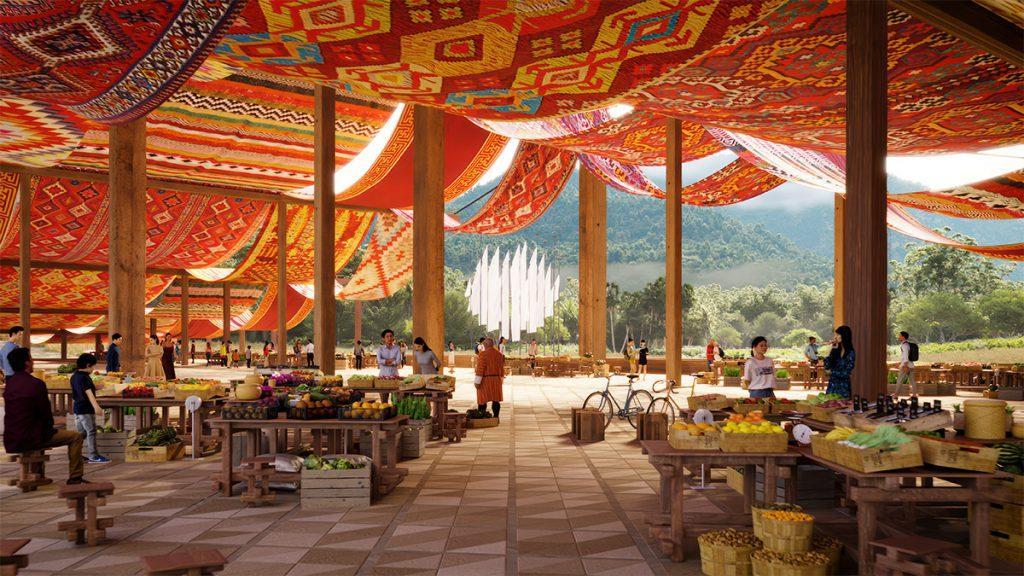
There is no lack of demand. The number of people wanting to visit the extraordinary kingdom has been rising rapidly for years. And if everything goes according to plan, the “Mindful City” project will probably ensure that Bhutan continues to excel in terms of sustainability and gross national happiness – but in future with a unique innovation to boot. In line with its national vision “Bhutan Believe”, which focuses on optimism and aims to open up new perspectives for its citizens, make them proud of their country and inspire them as well as visitors from all over the world.
Text: Elisabeth Schneyder
Bilder: Department of Tourism Bhutan, BIG, Brick Visual, Atchain


